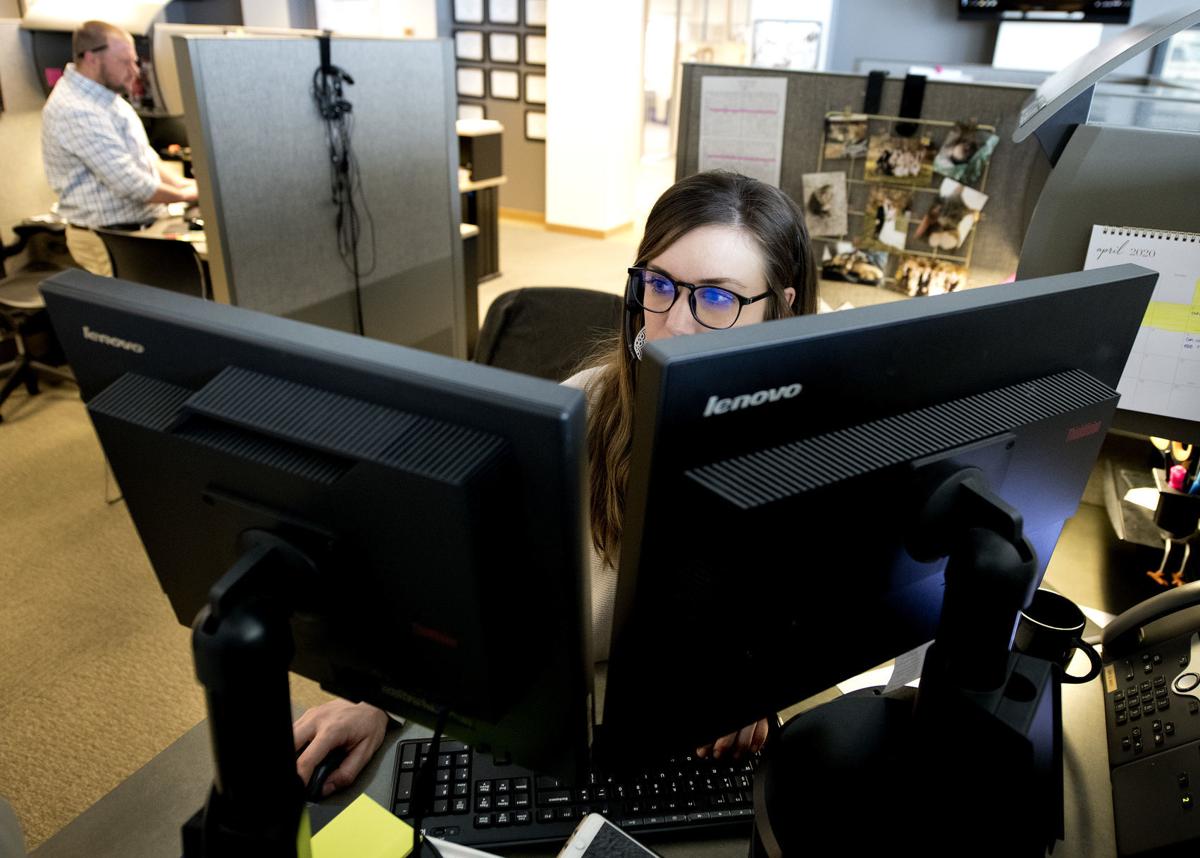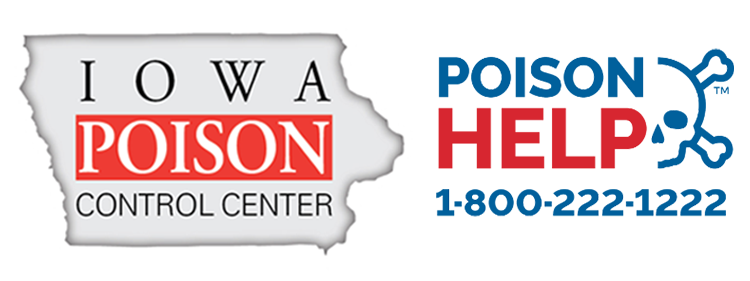
For Poisoning Questions or Emergencies, Call the Poison Experts at 1-800-222-1222
Sioux City-based Iowa Poison Control Center sees uptick in calls amid COVID-19 pandemic
Sioux City Journal - Sioux City, IA - Dolly Butz
SIOUX CITY -- Even before President Donald Trump suggested scientists study whether injecting disinfectant into the human body could kill the novel coronavirus, the Iowa Poison Control Center noted a spike in calls concerning harmful exposure to household cleaners and disinfectants.
In March, the IPCC recorded 100 total exposures involving either ethanol-based hand sanitizer, bleach or disinfectants, which was more than twice the number of total exposures for those products reported in January and February.
"People are using, of course, more disinfectants because of the virus. Unfortunately, kids are getting into it," said Linda Kalin, the IPCC's executive director. "Let's face it, kids are at home. There's gaps in supervision. Accidental childhood poisoning is pretty normal, but we have seen that uptick."
Exposures for ethanol-based hand sanitizer, bleach and disinfectant also jumped individually in March from the previous year.
The IPCC had 34 bleach exposures and 34 disinfectant exposures, which was more than twice the number of bleach and disinfectant exposures recorded in the same month in 2019. Ethanol-based hand sanitizer exposures also increased from 21 in March 2019 to 32 in March 2020. As of Friday afternoon, the IPCC had recorded 41 ethanol-based hand sanitizer, 38 disinfectant and 29 bleach exposures for the month of April, topping its totals in those categories from both April 2018 and 2019.
The rise mirrors a report from the Centers for Disease Control and Prevention, which states that cleaning and disinfectant chemical exposures recorded by the National Poison Data System "increased substantially" in March. The CDC looked at data from January through March 2020 and found that exposure calls involving cleaners and disinfectants increased 20 percent from that same time period the year before and by roughly 16 percent compared to that time frame in 2018.
Tammy Noble, the IPCC's education coordinator, said staff have just recently begun asking whether calls coming into the poison control center are related to COVID-19. She said some of the increase in calls could also be tied to spring cleaning, as well as people doing more cleaning because they're spending more time at home due to closures implemented to prevent the virus' spread. Noble said some of the calls involve adults who accidentally splashed cleaner in their eyes or inhaled vapors while cleaning in confined spaces with poor ventilation.
"I've heard people that have cleaned every closet in their house, already. They're looking for things to do, so they're cleaning," she said. "It may not be necessarily that, 'I was cleaning because of (COVID-19),' but in a way, it is kind of because they don't have anything else to do."
Although the CDC said the increase in total calls was seen across all age groups, exposures involving children age 5 and younger accounted for a large percentage of total calls to poison control centers over the three-month study period.
Trump made the comment about injecting disinfectant during an April 23 coronavirus briefing. He has since said he was speaking sarcastically. After Trump made the remark, Clorox issued a statement saying, "Bleach and other disinfectants are not suitable for consumption or injection under any circumstances. People should always read the label for proper usage instructions."
Noble said Friday that she is not aware of any exposures involving the intentional ingestion of disinfectant to kill COVID-19, but she said the IPCC has fielded fewer than five informational calls about it. An operator for 211 Iowa/Nebraska said Wednesday that to her knowledge, the hotline hadn't received any of those types of calls.
"We have had a few informational calls from people wondering if that's a safe way," Noble said.
Kalin warned, "Don't swallow it. Don't inject it, or use any other route."
"I think the public would know that could be toxic or poisonous. I don't believe that we're going to be seeing some big spike in people trying to drink (disinfectant)," Kalin said. "They know we don't drink this, or they wouldn't be calling the poison center when kids get into it."
Potential for harm
Kalin said the consumption of hand sanitizer can cause a dangerous drop in blood sugar and depress respiration.
When a hand sanitizer exposure call comes in to the IPCC, Kalin said specially trained pharmacists and nurses calculate the child's potential blood alcohol level using the child's weight and the amount of alcohol in the bottle that they drank from. Kalin noted that the bottle of hand sanitizer in her briefcase contains 63 percent ethyl alcohol in comparison to 80 proof vodka, which has roughly 40 percent.
"It's not just a drunk kid and they're going to be fine. We know what alcohol can do to people," she said. "They can end up in the pediatric ICU if it's bad enough."
If the child's estimated blood alcohol level is low enough, Kalin said staff tell parents to give the child a sweet snack now and maybe again in an hour, but if it's on the high end, she said the child needs to go to the hospital.
"That does not mean every kid should go in if they drink sanitizer. The vast majority we're managing in the home," she said.
Whether at home or in the car, Noble said it's paramount that adults supervise children when they use hand sanitizer. At all other times, she said the product should be stored in a safe place.
"It's best to keep it out of the reach of children just because of the amounts of alcohol that are in it and that can be very dangerous to young children if it's ingested, even in small amounts," she said.
When a child accidentally consumes a disinfectant, Kalin said parents should have the bottle with them when they dial 1-800-222-1222, the poison control center's 24-hour emergency hotline. IPCC staff need to know the exact type of disinfectant, so that they can find out what chemicals it contains with the help of a database. The disinfectant could be irritating only, or Kalin said it could have corrosive properties and cause chemical burns. Consumption of Lysol all-purpose cleaner, a cationic detergent, could result in minor mucosal tissue irritation or vomiting, diarrhea and abdominal pain.
"If it's a concentrated solution, then there is potential for burns to the mouth, the throat and the esophagus," said Kalin, who said most of the disinfectant calls the IPCC receives involve irritation caused by cleaning products. "Always remember, too, adults can get this in their eyes. It causes mild to moderate discomfort, but it can also cause corneal damage if it's concentrated enough."

Grant Houselog, a pharmacist, works at his desk Monday at the Sioux City-based Iowa Poison Control Center. With sharply increased use of cleaners and sanitizers due to the COVID-19 pandemic, the poison center is seeing a spike in the number of calls concerning harmful exposure to cleaning products.

Iowa Poison Control Center pharmacists Aerial Lapke, foreground and Grant Houselog work at their desks Monday at the poison center's Sioux City office. With sharply increased sales of cleaners and sanitizers due to the COVID-19 pandemic, the poison center is seeing a spike in calls.
